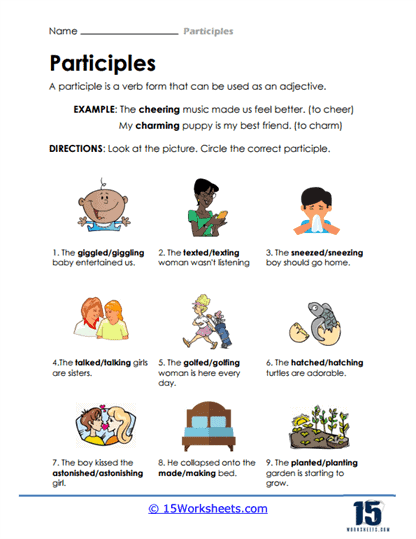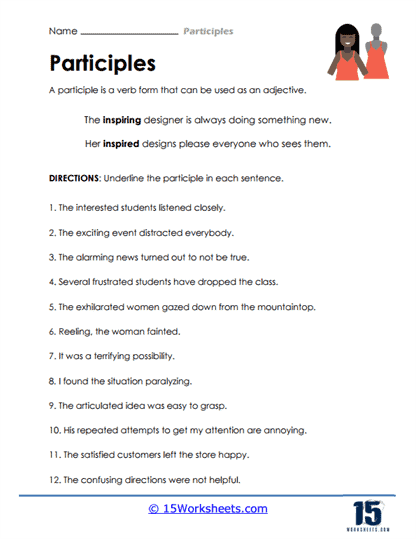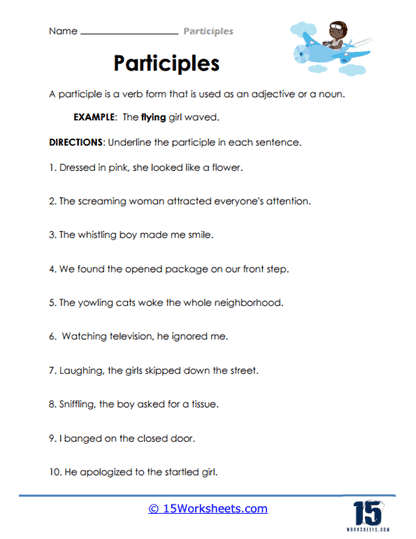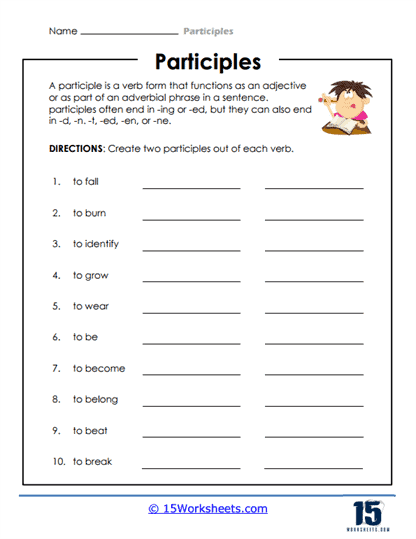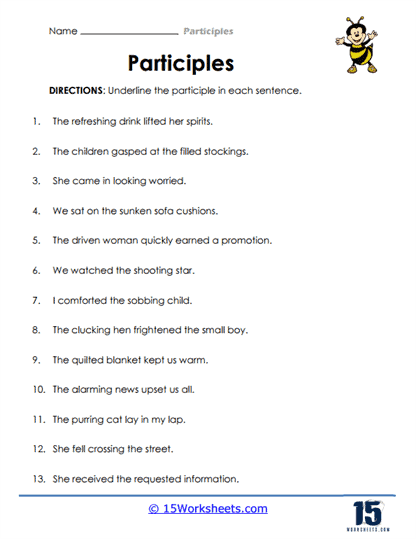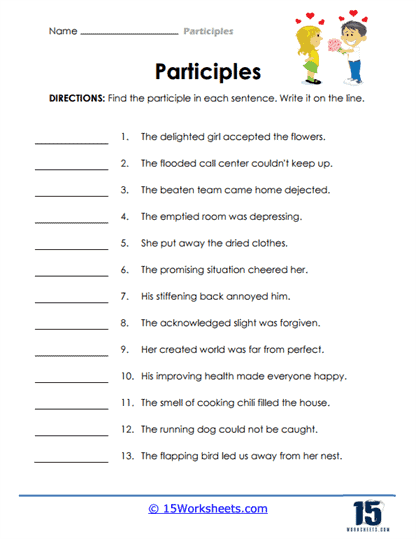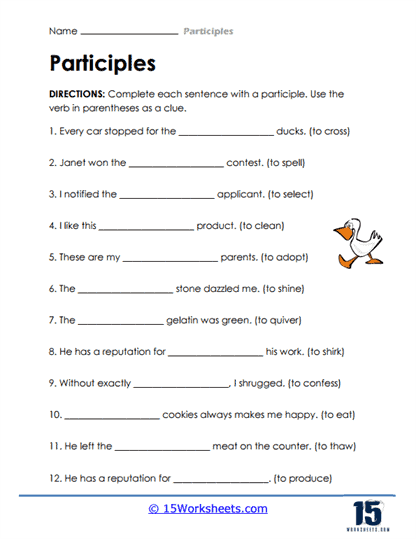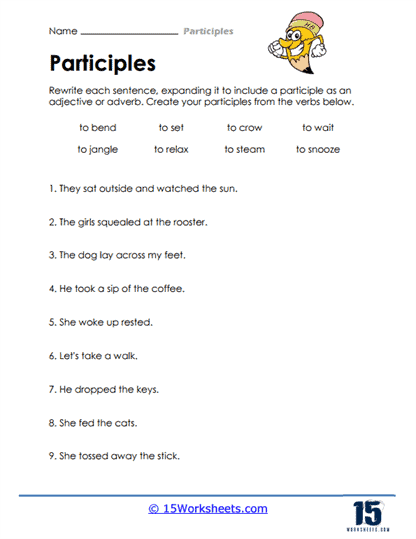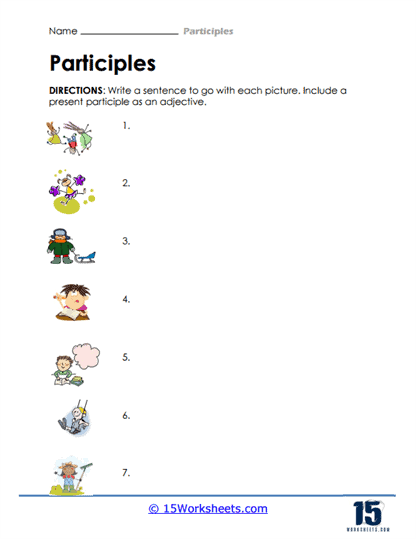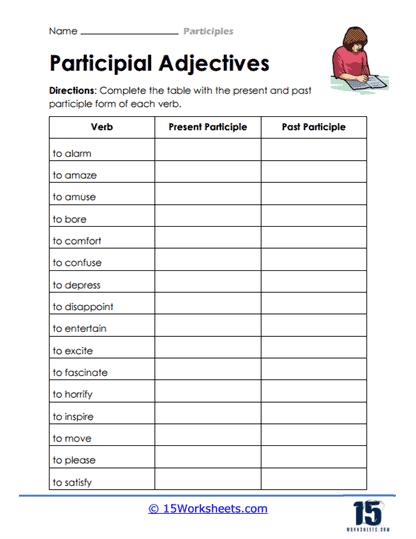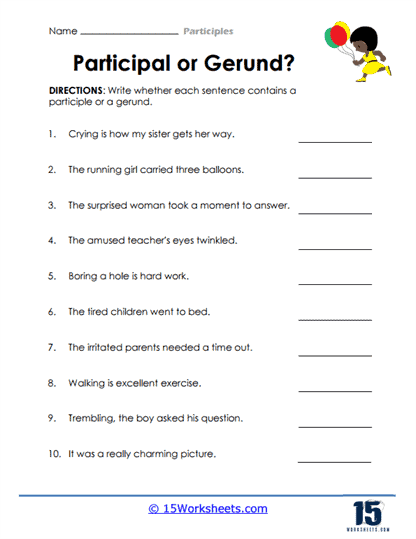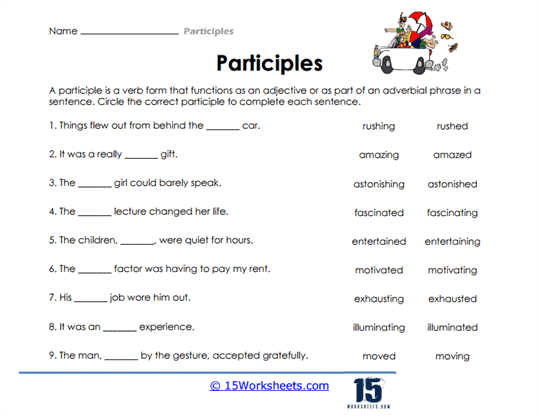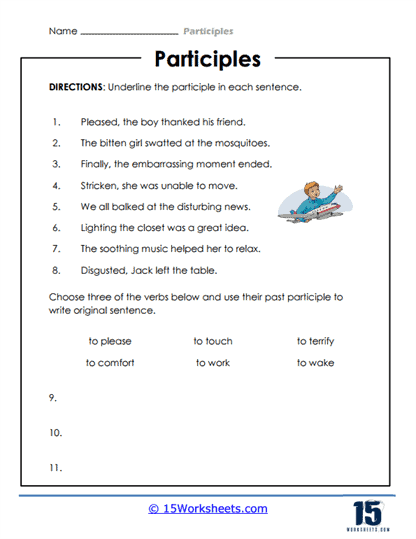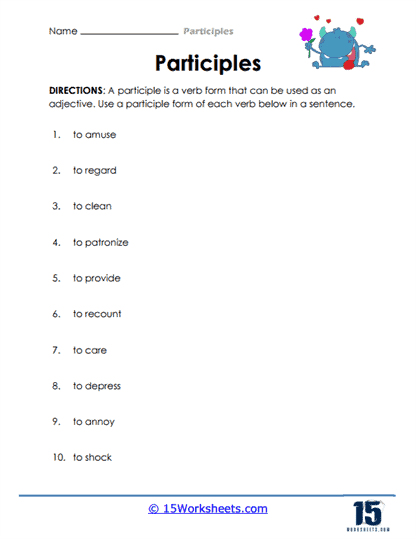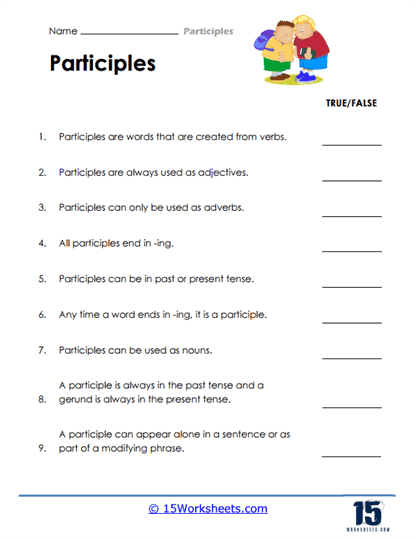Participles Worksheets
All About These 15 Worksheets
These participles worksheets are helpful resources for teachers who seek to have their students understand and use participles correctly in spoken and written communication. These worksheets include exercises and activities that involve identifying and using participles in sentences.
Some of these worksheets begin with an explanation of what participles are and how they function in language. Then, the students are guided to a clear set of instructions which will help them understand the correct usage and function of participles in grammar, and even how to distinguish it from a gerund. Through these worksheets, students will:
- Learn the correct usage of participles in sentences;
- Create their own participles from verbs;
- Make sentences with participles;
- Distinguish the present participle from the past participle, and participles from gerunds;
- And understand the form and function of participles.
These worksheets can be used in a variety of settings, including classrooms, homeschooling environments, and tutoring sessions. By using these worksheets on Participles, teachers can help improve their students’ understanding and use of participles, which can enhance their overall communication skills and writing ability.
What are Participles?
Participles are a type of verb form in English that are used to form various verb tenses and constructions. There are two types of participles in English: the present participle and the past participle.
The present participle is formed by adding the suffix “-ing” to the base form of the verb. For example, in the sentence “He is singing,” “singing” is the present participle of the verb “sing.” The present participle is used to form the progressive tenses, such as “He is singing” or “They were eating.”
The past participle is typically formed by adding the suffix “-ed” to the base form of regular verbs, but irregular verbs have unique forms. For example, in the sentence “She has eaten,” “eaten” is the past participle of the verb “eat.” The past participle is used to form the perfect tenses, such as “She has eaten” or “They had gone.”
In addition to forming verb tenses, participles can also be used as adjectives. For example, in the sentence “The running water was soothing,” “running” is a present participle used as an adjective to describe the water. Similarly, in the sentence “The broken vase was on the floor,” “broken” is a past participle used as an adjective to describe the vase.
Participles Vs. Gerunds
Participles and gerunds can be similar in form, but they have different functions in a sentence. The main difference between the two is that a participle functions as an adjective, while a gerund functions as a noun.
A participle is a verb form that ends in “-ing” (present participle) or “-ed” or an irregular form (past participle) and is used to describe a noun or pronoun. For example, in the sentence “The smiling girl waved at me,” “smiling” is a present participle that describes the girl.
On the other hand, a gerund is a verb form that ends in “-ing” and functions as a noun in a sentence. For example, in the sentence “Swimming is my favorite hobby,” “swimming” is a gerund that functions as the subject of the sentence.
One way to tell the difference between a participle and a gerund is to look at the function of the word in the sentence. If the word is used to describe a noun or pronoun, it is a participle. If the word functions as a noun, such as the subject or object of a sentence, it is a gerund.
Another way to differentiate between the two is to look at the verb tense. A participle typically functions as an adjective in a sentence, modifying a noun or pronoun and can be present or past. A gerund, on the other hand, is always in the present tense because it functions as a noun.
It’s important to note that the context of the sentence can also help determine whether a word is a participle or a gerund. Therefore, it’s crucial to understand the difference between these two verb forms and how they function in a sentence to use them correctly.

